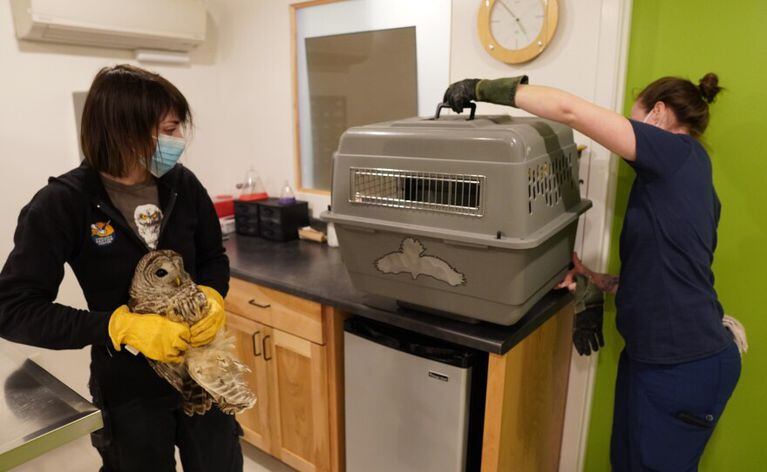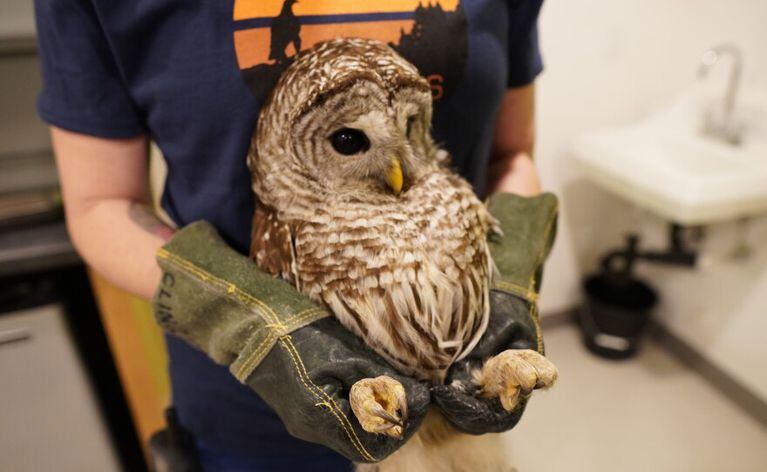
Brain Bull / KLCC
By BRIAN BULL/KLCC/Oregon Public Broadcasting
EUGENE — Over the last 32 years, the Cascades Raptor Center in Eugene has taken in more than 7,200 birds that have been injured, orphaned or fallen ill. Many have since been released back into the wild.
Demand for the center’s services has taken off as well, as its profile and reputation have grown.
It was a quiet day at the facility, located on the east side on Spencer Butte. That is, until Cindy Davis arrived from Junction City. She parked her car, then darted towards the center’s intake area clutching a carrier.
“The bird was flapping around in the trees in front of my house,” she told KLCC. “And my brother and I walked out there and put a net on it, and rolled it up in a towel, and put it in the crate and called here, and they said ‘Bring it on down.’”
Rehab technician Makayla Wilson had Davis fill out paperwork as the bird – a cream-colored peregrine falcon with lemon yellow talons – was tested for avian flu. Then Wilson and Ulrike Streicher, director of rehabilitation, examined it on a silver table.
Or tried to.
“Goodness, you’re a tiny little fellow,” mused Streicher, as the bird flinched and shook its wings. “And pretty.”
After the falcon was given fluids and placed into the ICU, Streicher gave her assessment.
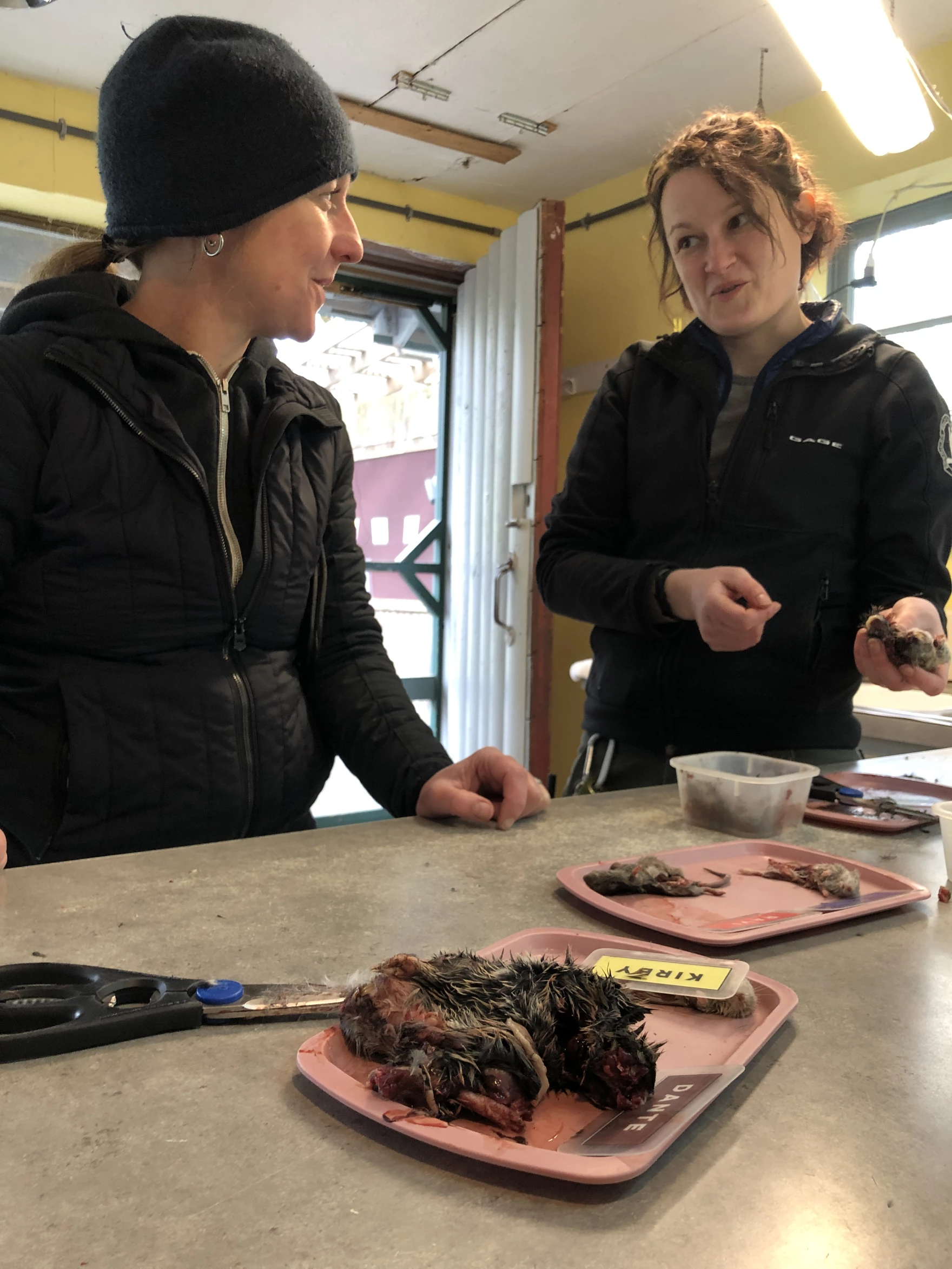
“Looks like mild spinal trauma, he can’t stand properly, so we’ll have to do an x-ray of the spine,” said Streicher. “We’ll keep our fingers crossed at this stage, and hope it’s going to be fine.” After a few weeks at the CRC, the peregrine falcon was released back into the Junction City area by Davis.
Accommodating the ambassadors
Next door, bird curator Kit Lacy and staff prepared to do their rounds with what the center calls its ambassador birds. These are three dozen resident raptors that can’t be released back into the wild for numerous reasons, so they stay at the center for educational purposes. And like any ambassador, they’re given very special treatment.
“We provide a whole food diet,” explained Lacy, using heavy shears to help her team snip apart dead gophers. It’s a reliable test as to who’s got the fortitude for raptor care.
“Raptors are obligate carnivores, which means they have to and can only eat other animals,” she added. “So rodents and rabbits and fish, and all sorts of different animals.”
The center staff always regard the raptors as wild animals. That means dealing with behavior that doesn’t always make “bird sense.”
“We try not to assume that we know what the birds are thinking,” said Sidney Campbell, a senior trainer.
Inside Newton the Northern Goshawk’s pen, Lacy and Sydney Campbell worked on calming him down as he emitted a high, shrieking cry and fluttered about. During this visit a few months back, Campbell was fairly new to Newton.
“All we’re trying to do is let them know that we’re there to provide positive consequences,” she said. “Newton just met me the other day, and we’re still working on teaching him that I am someone who brings good things!”
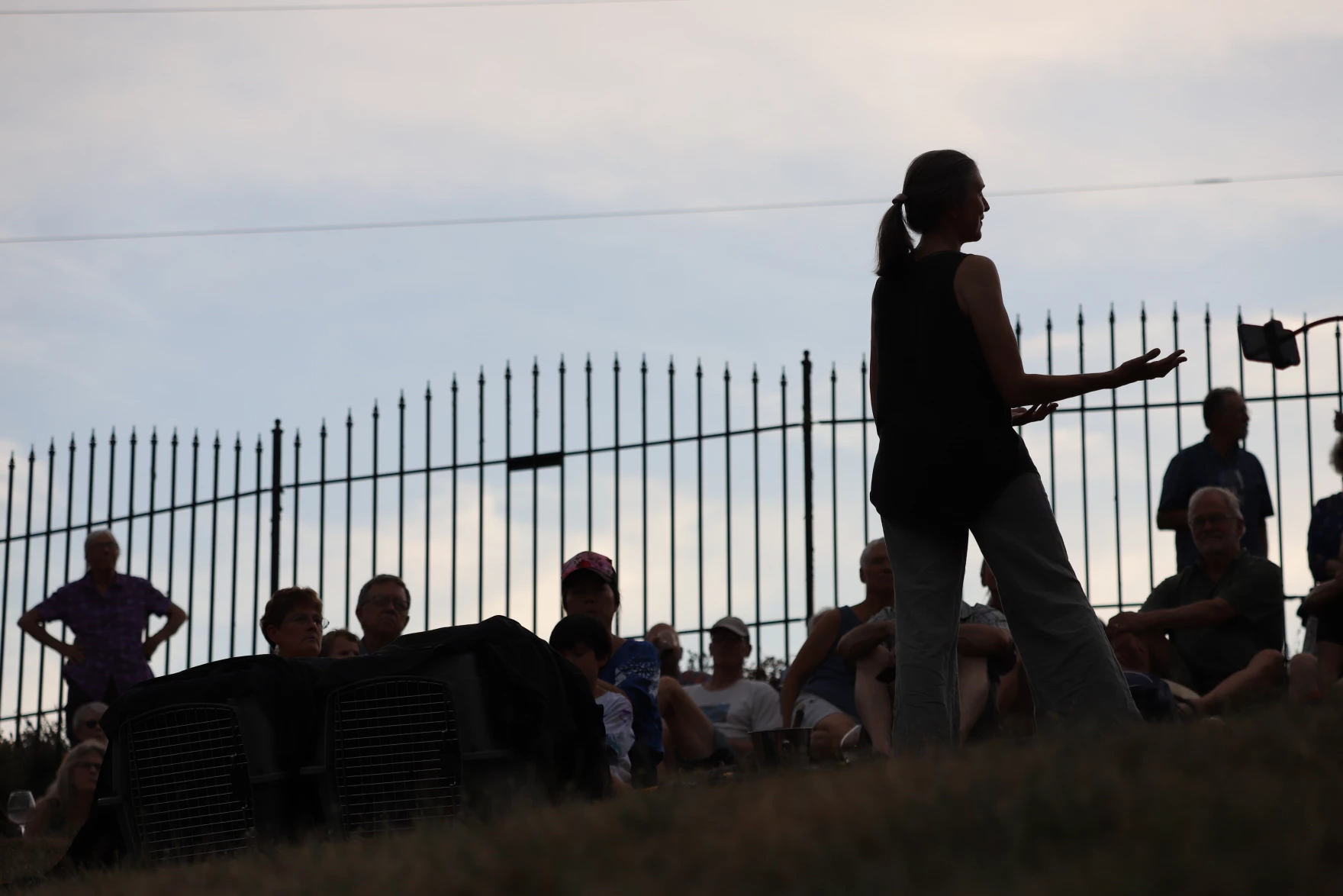
Each of the center’s 13 full-time staff members brings good things to their work. Things went a little calmer as Lacy made her rounds weighing and training the ambassador birds.
One of these is Lorax, a great horned owl from Pendleton who’s been here since 2005.
“Are you waiting for your training session? It hasn’t happened yet?” asked Lacy, to Lorax’s excited screeches. “Yeah, soon! Soon! Meep meep!”
Respecting the ‘wild’ of wildlife
Lacy said it’s rewarding yet challenging work for the crew. This means making hard decisions at times, such as euthanizing a distressed raptor that is beyond help.
“If an animal is so starving, that they’ve already started to basically eat their own organs, there’s nothing we can do to turn that around,” explained Lacy. “If a bird has come in with a traumatic injury to a wing, sometimes they hit wires so hard that they shear off their own wing. There’s nothing we can do for that animal.”
Someone who’s seen it all is Louise Schimmel, the nonprofit center’s founder and director emeritus. Since establishing the facility in 1990, she’s worked to educate the public on the realities of wildlife. This involves countering people’s tendencies to project human emotions and motivations on animals as seen in pop culture, where wildlife is often portrayed as a best friend.
“When we release a bird, it has to be afraid of people. It’s like their number one survival skill,” explained Schimmel. “And that’s really hard for people really hard for people to get you know? The most common phrase that we hear on the phone is, “Oh, he’s sitting right here. He knows I’m trying to help him.” And I’m saying he’s paralyzed with fright. You know, he’s 20 minutes away from dying of shock.”
Schimmel says there are people who do “get” wildlife, and abide by the raptor center’s guidance. This has been very important as of late, when the number of birds brought into the center spiked over the pandemic.
Lacy told KLCC that in 2020, 434 birds came to the hospital, while in 2021, the number was 703.
“Some people were out and about more outdoors during the pandemic, so maybe they were happening across injured animals,” she theorized. “2021 we had the heat dome, where we had the very, very high temperatures, that was during nesting season for many raptor species, so we had a huge bump for that.”
An ongoing education for the public-at-large
Promoting a deep understanding of their work is how this non-profit gets community support. Near the end of summer, four Northern Harriers were released at Abbelone Vineyard, just over the hill from the CRC.
As the crowd took their seats and sipped wine, Streicher discussed the center’s mission.
“If there’s a bird by the roadside, you don’t need to say, ‘Oh that’s really sad,’ and drive past,” said Streicher. “You can get out and check if it’s alive.”
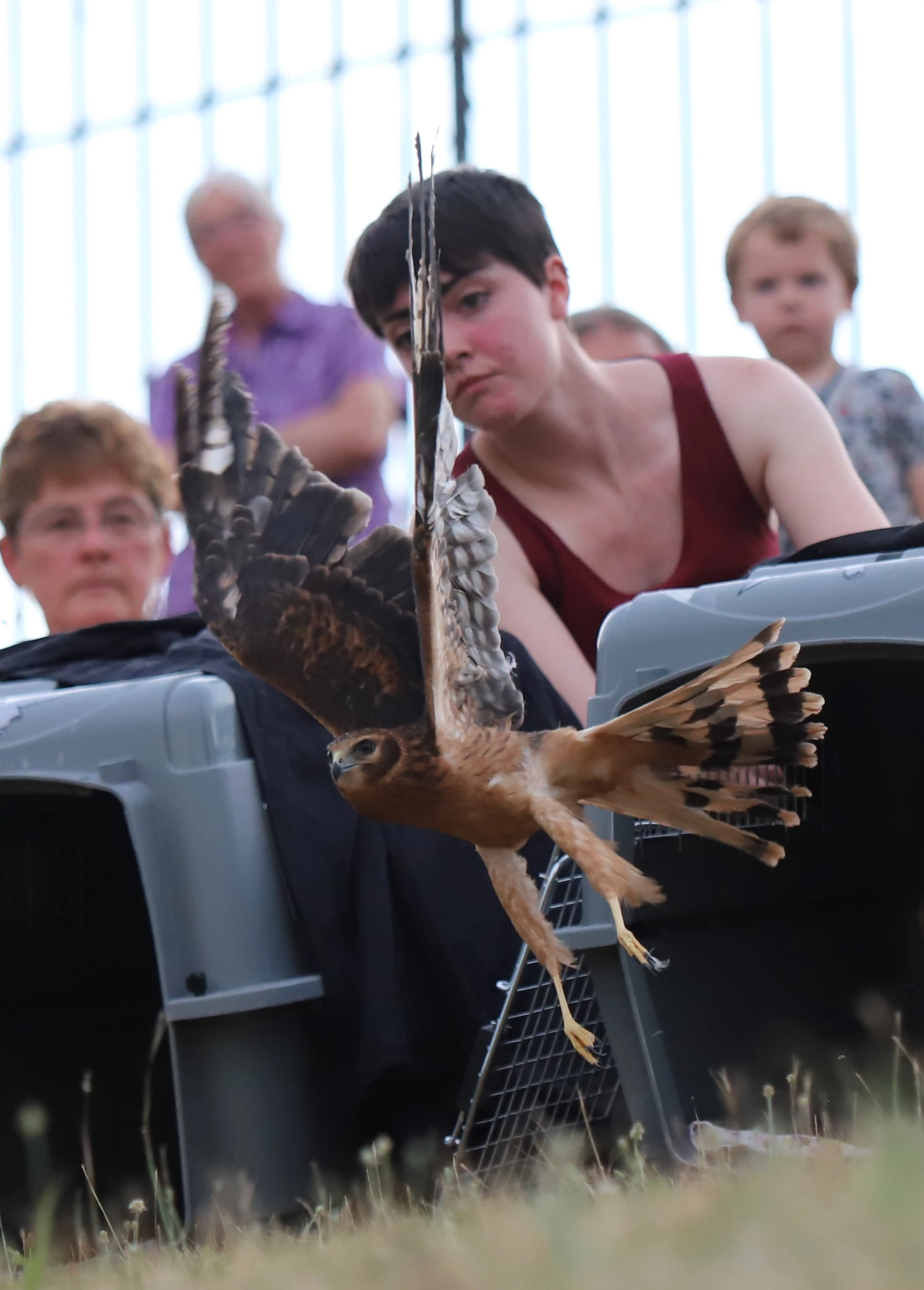
Then rehabilitator Victoria Willson opened the doors to the carriers containing the birds. One by one, the Northern Harriers burst out in a kerfuffle of feathers. People oohed and aahed at the sight, then applauded after the final bird disappeared past the treeline.
The Cascades Raptor Center has come a long way in its 32 years. Its most recent net assets have shown a rebound (roughly $1 million for 2021, compared to $822,000 for 2020; GuideStar gives the CRC a gold rating on its charitable ranking system). It’s also now a top destination for Eugene tourists, as well as a major resource for rescue and release operations.
“We have such a strong, supportive community, and we seem to be in a relatively strong financial position,” said Schimmel. “Altogether that means that we’ll be here for the long haul. That we’ll be in service to the community and to the birds for a long time.”
As human development grows and expands across the region, the urban-wilderness interface narrows more and more. The Cascades Raptor Center’s staff is prepared to continue its mission, one raptor at a time.



